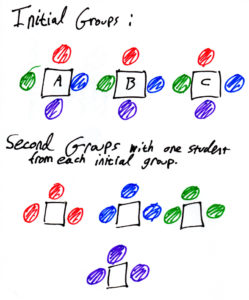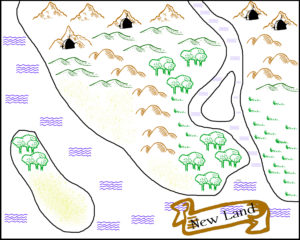Here I’ll be talking about getting illustrations for self-published books. Not enough authors or writers give much thought to art. Yet the process of getting art for your project needs to be taken seriously. I’m not getting into cover design just yet; that’s a whole topic itself, something I will cover in a later post. Right now, we’re talking about interior art.
It’s important to choose art that adds value and to think about the style and purpose of adding illustrations. There are also licensing and copyright issues to consider. In addition, you may wonder Should you hire an illustrator? How much will it cost? Can I use pictures from free sites? Should I? How much can I expect to pay for art for my book?
Let’s start with what kinds of illustrations you might need, and to figure that out, you need to think about the purpose of art in a book.
Some art
Why Do You Need Art?
This is a hard question to answer philosophically, but fortunately, I mean it practically. What actual art do you need for your book and why? The first step before figuring out where to get art is to think about what kinds of illustrations you need at all. Take some time to sit with your content, if you haven’t already, and note where you think illustrations would be needed, what kind, and what you think they should look like.
If you’ve ever done any professional materials writing, you know that education publishers want you to create art briefs, and often make a list of illustrations needed. I highly recommend you do this for your own illustrations for your self-published book. In general, it’s a good idea to take your self-publishing project seriously. Act like you’re a large publishing company. This is one of the biggest lessons I’ve learned (and relearned) from years of small-scale publishing and self-publishing.
Open a spreadsheet or a notebook, if you’re a paper-and-pencils kind of person and make a numbered list. I’d include the following headings.
- page number where the illustration will go
- unit or chapter or section (page numbers change)
- relevant context and purpose (is this for an activity or as a hero image or perhaps a decoration)
- a short name that helps you visualize what kind of image you want
- a longer detailed description (could be as simple as “an open book” or as long as a description of a scene)
- links to any reference images (images that help you visualize what you your illustration to look like) OR links to actual images if you have already found ones you like, or are using screenshots.
You may not know all this information right away, so you can fill things out as you go along. And remember, this is probably for your eyes-only so don’t sweat trying to make it sound perfect or professional! As long as you know what you want to say, you’re good!
If you find this article is helpful, check out all my posts on self-publishing, covering everything from editing to formatting to finding a distributor and more!
I also recommend going through your manuscript and marking the corresponding illustration numbers from your list in the text. I like to use a different font color than the text and use the abbreviation ILLO. So you’ll see lots of pink ILLO 1, ILLO 2 and so on in my drafts!
Where to get illustrations for your self-published work?
Great. We know what we want! Where do we get those amazing illustrations?
Free Sites
There are a number of sites that offer images for free, but of course there’s always a trade-off. There are also some risks to free sites you should be aware of! I could spend all day listing every site to get stock photos for free, so I’ll limit myself to five that I have used in the past.
Unsplash has beautiful high-quality scenic photos, so they are great for decoration or mood. They also tend to look a little less like stock photos. No artificial smiles. No perfect clothes and makeup and poses straight from the textbook. The trade-off is that it’s hard to find specific things or scenes. If you’re doing a coursebook for beginners and need to illustrate fireman, teacher, construction worker, and farmer, you may be out of luck.
Pexels is a more viable Unsplash alternative, in my opinion. Pexels.com balances the kind of specificity you need in stock photos with a look that isn’t too polished.
Pixabay has a good variety of photos and, unlike other stock photo sites, also includes clip art and drawings, but the quality does vary. You’re more likely to find a specific picture of a specific thing, but there may not be much variety or choice. Also, Pixabay has been around for a while, so people have seen a lot of the images before. You don’t want to use stale images; It doesn’t look professional and they won’t have the same impact on the reader.

Vecteezy is a good alternative to Pixabay because the quality is consistently higher and it includes digital images as well as photos.
I’ll also mention Icons8 which is a nice site for little icons and symbols. Who doesn’t need a good arrow to point at sidebars, or a symbol for a speaking activity, from time to time?
So what’s the catch?
Free sites do have a few issues. If you have very specific image needs, such as a diagram labeling all the parts of a car or a fireman that has an axe, an oxygen mask, and a first aid kit on their belt, you may not be able to find that on a free site. The selection is by definition limited.
Furthermore, no website can likely help you if you need a series of photos with the same model or background. I once searched for hours for a photo of a teacher smiling at a student, then the same teacher frowning at a colleague, and finally a picture of her at home with her feet up on the couch looking frazzled. Finally, I had to go photograph a friend.
You may also think about hiring an illustrator in these cases. An illustrator may also help if you have very detailed needs such as a sunrise over a swamp in Florida as an alligator stalks a flamingo and a scientist observes from a nearby motorboat. As you do.
Another thing to think about is consistency. Yes, I can find images of different kinds of food, but will the style be consistent? If you use photos with backgrounds in an activity or section, they should all have backgrounds. If you use isolated photos (no background or plain white background), they should all be isolated. Mixing illustrations and photos, or hand-drawn and vector-drawn illustrations in the same place is also jarring. So hiring an illustrator or photographer is another potential solution here.
Legal Issues
Beyond style considerations, there are also some serious legal issues to think about when using free stock photos. Honestly, these issues apply to any stock photo, but free sites are more prone to abuse, because well, they’re free! Paid sites run by a reputable company are more likely to vet contributors or even make them pay a subscription fee. Scammers hate paying fees!
The first issue is that some contributors steal art and put them up on sites. Besides being immoral, using those stolen images in a commercial work can open you up to being sued. I recommend a quick reverse image search to make sure that the image you download is found on stock photo sites under the same name and not on an artist site.
Second, a photographer does not necessarily own everything in an image. You also need to think about model rights, property rights, and copyright issues. If there’s an identifiable person in an image, you want to make sure they have signed a release to the photographer. If it’s a famous person or a particular event (like a sports match or awards show), it’s unlikely you can use it in a commercial work. These images are often marked editorial. So no Beyoncé for you! (I’m pushing my luck with the picture of Art Garfunkel, but since this is a free site, I think I’m ok!)
Even public landmarks like the Eiffel Tower can be under copyright. So can brand images like a Mustang car or an Apple computer. And yes, people have been sued for using images that the photographer didn’t get releases for! So read and reread terms of license of a free site before using the images there, particularly images of identifiable people, places, or things. Of course, if you spend a lot of time on stock photo sites, you’ll notice professionals tend to avoid identifiable brands, locations, or products in their photos.
Hidden Treasures
That being said, there are some places to get some awesome images that are in the public doman! The US government releases to the public domain all intellectual property created by government employees for their jobs. So you can find a lot of cool historical images and art for free! Actually, since the Library of Congress and the Smithsonian Museums are government institutions, you can find ridiculous amounts of art, scanned books, and other historical documents for free. I recommend you go to official sites and search there though. Here are some of my favorites:
- The Smithsonian: 19 Museums and 21 Libraries!
- The National Archives: Great for historical events and documents
- The Library of Congress free images: Even more historical events, documents, and photos of American life. You can also find scans of books from the archives.
There are three other reliable sources of public domain images or images that are free to share under Creative Commons Licenses. You do need to carefully read the licenses and any requirements in terms of commercial use (or lack thereof), attribution, and whether you can change the image or not.
- Creative Commons Openverse: A searchable archive of images creators choose to share.
- Flickr Commons: a project to make it easier to find photos in public archives.
- Wikimedia: Designed to support Wikipedia, it’s a good collection of illustrative images. My go-to source for locations and portraits of specific people. Carefully read the licenses, though and credit where needed.
Paid Stock Photo and Illustration Sites
So, let’s take a look at paid sites. The advantage of a paid site is that there are less likely to use stolen images or images with copyright/release issues, or other professional, legal, or ethical quagmires.
I should also note that if you’re out there as an indie creator trying to get people to buy your stuff, you should really support other indie creators by buying their stuff. It’s the right thing to do.
Stock photo sites usually charge in one of two ways: subscriptions or per-image. Chances are the charges per-image will be prohibitively expensive, unless you need just one image, and you have to have it! So you’ll want to think about a subscription, and obviously the best way to price it is to think about price per image. Also, think about duration. A lot of plans let you pay month-to-month, so you could join for a month, download all the images you need, and then unsubscribe. The key is to do this only after you know exactly what you need.
There’s also often an option to download a free, watermarked version of the image. That lets you see if the image works in context before buying it (Just don’t forget to actually buy the image because leaving the watermark in place looks sad)!
One of my favorite sites, Depositphotos (referral link), does flat fee plans. You pay and get access to a set number of images with no time limit, usually 100 images for $100! They also often do promotions and sales, which are worth checking out. You may not need 100 images for your book, but you can use them for the next book, or your blog, social media, teaching materials, presentations, or more!
Adobestock and Shutterstock are two other large stock photo and art sites. Neither is unreasonably priced, particularly if you need a a small number of photos

Doing it Yourself

If you need a diagram or quick sketch, you can sometimes do the illustrations yourself. First of all, I should say that I think the world needs more diagrams. When I read a teacher activity book, I find I can never quite grasp where Line A or Line B is supposed to go without seeing it drawn out. As an author, I also find I sometimes forget to mention important details until I’ve sketched the activity out. “Did I remember to mention that Student C is supposed to be BEHIND Student B?” Similarly, if you’re discussing seating charts, room layouts, or geographic locations, putting in a good diagram is never a bad thing.
It’s not terribly demanding to sketch out a little diagram or illustration. You can also use digital tools like Canva or your PC’s built-in illustration tool to make simple diagrams!

Furthermore, if you mention particular teaching materials such as cards or a worksheet, it’s really helpful to include samples as a picture or table or diagram. That way, teachers can see the level of detail, the size, different sections required, and all those pesky details you might forget to describe. Depending on book size and copyright, you can also make the materials photocopiable or add them to a website where teachers can download them!
By extension, a good illustration can, well, illustrate your point. Talking about Social-Emotional Learning (SEL)? Images of facial expressions or body language, as well as photos of particular behaviors can come in very handy.
Think about points in your book where a picture might be worth a thousand words as they say. You might also consider whether having a nice image would break up long pages of text and make the book look friendlier. Of course, how “friendly” the book should look depends on the genre.
Should you hire an illustrator for a self-published book?
Another option, particularly if you need a lot of images or specific illustrations, is to hire an illustrator or photographer. Hiring a top-notch experienced professional book illustrator can get quite expensive. As with anything in life, cost is directly related to skill and experience. If it’s in your budget, that’s great. If not, there are other more affordable options.
I recommend you tap your networks and see if you know any artists who might charge more reasonable fees or be open to bartering. I know of an author who helps design and publish brochures and art books for the local art gallery. In return, the head of the gallery does some spot illustrations. Win-win.
Speaking of networks, it’s always a good idea to mine LinkedIn for talent. A search for “book illustrator” will probably turn up some great leads. Be sure to look at their website, and make sure their style and their experience match what you are looking for.
If you’re looking for more affordable help, Fiverr.com is a great place to find extremely affordable artists. Most artists there have package deals so you have to be extremely specific about what you want your images, and be prepared to pay for every extra character or detail. You also have to be very explicit as often the illustrators there are focused on finishing the job. They draw what you tell them and what you pay for and don’t go beyond. They also don’t know anything about ELT and typically don’t look at your book, so you have to be good at writing art specs. However, the overall cost ends up being much lower than you would pay for a big-name artist and many people on Fiverr are surprisingly experienced and talented.
Decorative illustrations
Generally, teacher-resource books, academic texts, and graded readers will have no decorations, or limited ones, such as a colorful shape behind the Unit title or an ornament between sections of a text and perhaps an image or icon on the chapter heading pages, maybe a fancy border around a table or sidebar.
Textbooks or student activity books tend to have more elaborate decorations. Look at the layout of a textbook and note how the unit headers, chapter titles, sidebars, activities, and readings are decorated. You’ll likely see a variety of colorful shapes, lines, and icons.
In both cases, however, you’ll probable find all you need in the book design software. Programs usually have horizontal lines and boxes, and various ways to style them and styling options. There are also ways to add background, lines, and shading to texts. In addition, most fonts have what are called “ornamental glyphs”. Use a glyph or symbol browser to find all sorts of hidden treats. The font Minion Pro, in particular, has some lovely ornaments that work great for section breaks or unit openers. Any font named Dingbats or Wingdings will also have icons and decorations that you might find useful, used sparingly.

Sometimes you may want to get a bit fancier, though. Stock photo sites, the good ones anyway, will have decorative elements for books. You can borders, hand-drawn Victorian or Art Deco style lines, even Celtic knots. Finally, you can look for icons or even backgrounds to put behind your text. These are particularly helpful when working in a particular genre, or for formatting a reading to look like a website, or a letter, or what have you. When I designed a student book where the readings were meant to mimic secret agent files, I had a lot of fun with the cover, using a manila folder background and thick borders that made the illustrations look like polaroid pictures.
Mix and Match
I hope this article has been helpful in giving you ideas where to get illustrations for self-published books. I tried to give some parameters to think about, and the pros and cons of various options for sourcing art for a book. In the end, you may end up taking a few snapshots of something yourself, with a high-quality camera of course, use a lot of stock-photos from a paid site, as well as a handful from a free site that you really like, and sketching a few diagrams or sample activities yourself!
As always, leave questions or comments, particularly if you have a great place for authors to get art!
This article is part of a series on self-publishing in ELT. In the previous article, I talked about how to find a marketable idea. In the next article, I’ll talk about editing: what kinds of editing are there, what do you need, and can’t you just do it yourself (no, you can’t).
And if you’re looking for some help self-publishing, check out my portfolio and rates and services.

